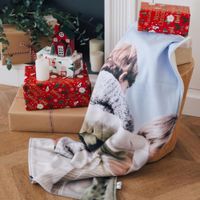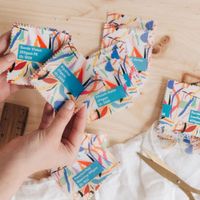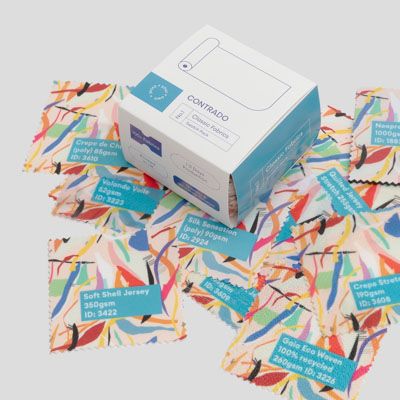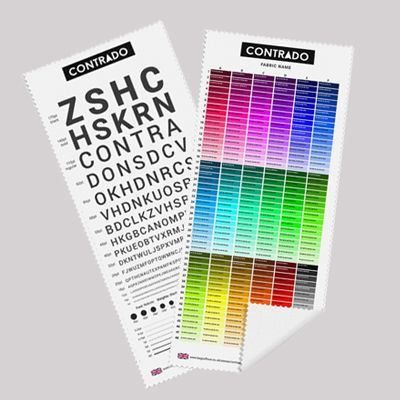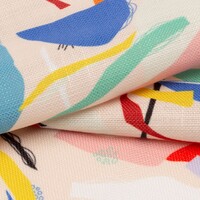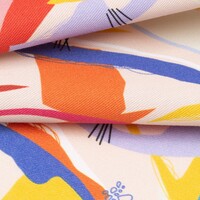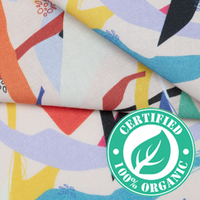Range of Lampshade Fabrics
Browse our range of lampshade fabrics
-
![Dorchester Linen Look 6.81oz]()
Dorchester Linen Look 6.81oz
- Max Print:
1.49yd - Weight:
6.81oz - Roll Width:
1.51yd
Soft, Matte, Woven, Poly. Linen look. Coarse weave, large fibers. Off white base. Not totally Opaque. Great for craft projects. Use: coats / garments, soft furnishing, craft projects, cushions
Composition:100% polyester
-
![Cotton Twill 6.28oz]()
Cotton Twill 6.28oz
- Max Print:
1.59yd - Weight:
6.28oz - Roll Width:
1.61yd
100% cotton, classic Twill. 3/1 Twill weave. Medium weight, great for outer garments, light upholstery.
-
![Cotton Calico 5.3oz PGT]()
Cotton Calico 5.3oz PGT
- Max Print:
1.61yd - Weight:
4.48oz - Roll Width:
1.63yd
Basic plain weave, dyed white cotton calico. A simple cotton, dyed white for optimal color.
-
![Furnishing Leatherette 17.70oz]()
Furnishing Leatherette 17.70oz
- Max Print:
1.40yd - Weight:
17.70oz - Roll Width:
1.42yd
90% PVC, 5% Polyester, 5% Cotton. Durable "leather" stamp effect leatherette. 30k Martindale rub test for durability, BS5852 cigarette & match FR test for UK domestic furnishings. Waterproof (BS3424.5A).
Composition:90% pvc, 5% polyester, 5% cotton
-
![Chichi Furnishing Velour 8.26oz]()
Chichi Furnishing Velour 8.26oz
- Max Print:
1.50yd - Weight:
8.26oz - Roll Width:
1.52yd
Elegant, stylish and utterly sumptuous short piled Chichi Soft Velour. Passes 30k Martindale rub test for durability, passes BS5852 cigarette & match FR test for domestic furnishings.
Composition:100% polyester
-
![Plain Weave FR Polyester]()
Plain Weave FR Polyester
- Max Print:
1.53yd - Weight:
4.28oz - Roll Width:
1.55yd
Plain Weave FR Polyester 145gsm
Composition:100% Polyester
Care instructions
Wash at 30°C / 86°F, low tumble dry heat, hang to dry, do not wring, low heat iron.
How Fabric For Lampshade Works
There are two ways in which to use fabric when creating lampshades; you can either make lampshade fabric, or fabric lampshades. These sound like the same thing, however that is not the case. Some lampshades are made with a frame and fabric, and some are made with a lampshade inner and then a fabric covering. Read more about these methods below. Print your own lampshade fabric with your photos, designs, and text.
How to Make a Lampshade Cover with Fabric
This is arguably the simplest way to create custom fabric lamp shades as a DIY project, and can be done in a few simple steps.
Step 1: Choose a base
This can be either a plain lampshade, preferably in white or cream, or it could be a specifically designed inner material for a lampshade. This can be in any size or shape you like, but bear in mind that the more complicated it is, the trickier the later steps will be; you may find it easier to start more simply and then build up to the more complex designs.
Step 2: Make a template
You next need to make a template of your lampshade. This is most easily done by marking the lampshade and starting on that edge. Lay a large piece of paper down and starting at the mark that you created, gradually roll your lampshade across the paper, marking its path as you go, until you are back at your mark again. (If you have a round lampshade, you'll end up with a rectangle, it is more of a cone shape you will have a curved arc) Add approximately 1 centimeter around all of the edges, for when you are finishing your lampshade.
Step 3: Cut your fabric and apply
Using your template as a pattern, cut your customized lampshade fabric to size. Make sure you are happy with the positioning of your pattern on the fabric and its placement. Once this is done you will need to fold up and press the extra centimeter you added around the edges; this will make up a seam. Apply the fabric to your lampshade lining, we would advise using a fire safe fabric adhesive and following the manufacturer's instructions.
Step 4: Finish
Ensure that your seam is stuck down over the edging of the lampshade, and allow it to dry. Spray your lampshade with a fire-retardant fabric spray, again following the manufacturer's instructions, and allow to dry completely. You now have your very own, personalized lampshade made using custom made fabric for lampshade.
How to Make a Fabric For Lampshade
Slightly trickier to create, fabric lampshades are made by mounting your fabric onto a styrene backing and applying to a metal lampshade frame.
Step 1: Select your frame and make a template
For this type of lampshade you will be looking for a wire frame, or lampshade rings. A frame will provide the whole of the structure, whereas the rings will provide only the top and the bottom. Using the same method as above, create a pattern for your fabric, using the shade itself as measurements. Remember to add extra all the way around for your seams.
Step 2: Cut your fabric and lining
Using your template you need to cut your fabric and lining to size. Adhesive styrene, or pressure sensitive styrene is one of the most popular materials. It is an extremely thing polystyrene sheet with a sticky side to attach it to your fabric. Any fire retardant, fireproof or fire safe material can be used as a lining, but make sure that you don't use something that may overheat and could cause a fire. With a fire-proof lining, any fabric can be used to make the outside of your lampshade, cotton, silk, and lined are the most popular choices.
Step 3: Piece together
Once all of your pieces are prepared, it is simply a case of putting them together. Remember to glue the seam of your shade together when you create the initial circle. If using a frame simply stretch your fabric and lining over the frame, pin in place and stitch. If you are using lampshade rings the easier way to do this is with bulldog clips; clip your fabric into a circle shape and stand it on its end. Carefully insert the ring into the top and clip into place around the top. Then using either a specially formulated lampshade adhesive, or by stitching, carefully secure your fabric over the ring of the lampshade. Once you have done, over-end it, and do the same to the other end of the lampshade.
Step 4: Finish
Once everything is dry (if you used adhesive) or stitched (if you decided to hand sew) it's time to work on the finishing touches. This involves cutting off any excess, trimming fabrics and threads, and just generally tidying your fabric lampshade up a little so that it all looks perfect. Once this is done your lampshade is ready to be placed on your lamps or light fitting.

